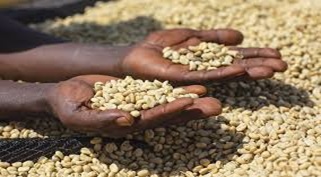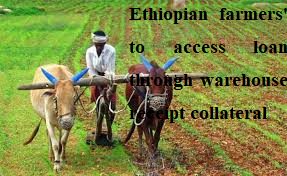
Principal crops including coffee, pulses, oilseeds, sesame and others have been the major sources for generating income in Ethiopia. Besides, exports are almost entirely agricultural commodities, and coffee, sesame and other oilseeds are the largest foreign exchange earners in the country. Needless to state, agriculture is an essential driver of economic growth in the Ethiopian, and crop and livestock production accounting for a remarkable share of nation’s GDP. Improved inputs, enhanced management techniques, and expansion of irrigation farming help boost agricultural output.
Cognizant of the fact those cash crops and other agricultural products are of significantly useful in fueling economic growth, The Ethiopian Herald conducted an exclusive interview with Mohammed Siraj, an agro-economist graduated from Dilla University, to have a professional opinion about the immense contribution of cash crops and other related products to the economic progress of the country.
He said, “Coffee, rice, tea, oilseeds, soybeans, and maize are cash crops, and all these crops are cultivated in Ethiopia in large quantities and exported to other countries that have relatively fewer yields in that regard. They may help in accelerating these yields and help Ethiopia on a path of sustainable intensification if legally produced and channeled well. By contributing to increased agriculture production and income of rural households, cash crops also contribute to sustainable intensification.”
As to Mohammed, these crops have a catalytic effect on agricultural innovations because they add value and increase productivity in rural areas and help develop institutions to support further growth. He said soil erosion is one of the major agricultural problems in the highlands of Ethiopia. Deforestation, overgrazing, and cultivation of slopes not suited to agriculture together with the farming practice that do not include conservation measures are the major causes for soil erosion in much of Ethiopia’s highland areas.
Commercial crops, often referred to as cash crops, are crops grown primarily for sale rather than for the grower’s consumption. These include a wide variety of crops, but the main ones are wheat, maize, potatoes, rice, cassava, sorghum, soybeans, sweet potatoes, and yams. These crops are known for their economic value and are cultivated in large quantities.
As to Mohammed, economic growth is a necessary, but not sufficient condition for poverty reduction. Today’s rich countries have generally passed through an early phase of agricultural growth, which has enabled subsequent growth in their manufacturing and service sectors. It is, however, not obvious that the same options exist or are ideal for today’s low-income countries.
Still, strong indications are that growth in the agricultural sector in low-income countries like Ethiopia leads to stronger reductions in poverty than growth in any other economic sector. Thus, the question is whether growth in the agricultural sector remains the best option to sustainably reduce poverty in countries like ours?
“The issue of linkages between agriculture, economic growth and poverty reduction is direct, indeed! The transformation of subsistence agrarian economies towards higher agricultural commercialization and towards a greater reliance on non-farm incomes generally is viewed as part of the growth process of developing economies.
True, promotion of high-value cash crops frequently is an important component of agricultural intensification and diversification, especially in light of a rapid transformation and modernization of the global food system. The links between cash crop production and rural incomes are both direct and indirect. Based on this, we conclude that there is a wide consensus among researchers that economic growth emerging from the agricultural sector is especially important for the reduction of poverty.”
The government support to agriculture – and development cooperation with it – should target a relatively vast set of crops and markets. Market opportunities of each crop ought to be considered, as well as linkages between agricultural subsectors and the rest of the economy. Although productivity increases in crop cultivation is key – with education, extension, research and development and irrigation as necessary components – it is equally important to make investments outside agriculture, for instance in rural road infrastructure and in markets and market institutions.
Challenges are even more pronounced since all this should be done with specific attention paid to agro-ecological diversity, soil compositions, social embedded status and other specificities of agriculture in sub-Saharan countries. Agricultural production has not been able to reduce poverty. Poverty reduction is influenced by government revenues to finance poverty reduction programs in both rural and urban areas.
He said, “Yes, agriculture remains the central trust of Ethiopia because it is considered the nation’s largest economic sector. True, agriculture is the principal source of food and livelihood or employment, making it a critical component of programs that seek to reduce poverty and attain food security in the country.
In Ethiopia, the primary commercial crop driving economic growth is coffee, which accounts for a significant portion of the country’s exports and is considered the mainstay of its modern economy; other important commercial crops include sesame seeds, pulses, and fresh vegetables, among others, plays a crucial role in domestic markets and is increasingly gaining international attention as a cash crop.
Exporting these commercial crops, particularly coffee, is a major driver of economic growth in Ethiopia. Besides, agriculture is the backbone of the Ethiopian economy, improving productivity, market access, and value addition to these crops is crucial for further economic development.
Cash crop production can effectively increase households’ agricultural income, and specialization in cash crop production often brings a higher economic return per unit of land they have devoted, including land, water, technologies, and, to some extent, labor input.
He said, “Cash crops provide cash in the market. These crops are most useful and are grown for nutrients and edible oil production in a country and the world. These crops are used in industries in high demand resulting in an increase in the rate of the crops. They include cereal grains, vegetables, and fruits, legumes and oil seeds. They help in the improvement of the economy of the country. Ethiopia often uses cash crops to augment its economy. Yes, these crops are used in industries and have a vast range of benefits.”
Economic development transforms an economy from one that is largely agricultural to one that is largely manufacturing and services. Since agriculture currently dominates Ethiopia’s economy and employment, however, there is an issue as to what its role should be in getting from here to there. In the normal process of economic growth, non-agricultural sectors grow more rapidly than the agricultural sector.
Moreover, the government of Ethiopia is committed to rapid growth of agriculture as a means of accelerating the economic transformation and reducing poverty. High agricultural growth also helps avoid the creation of megacities with large slum populations. Public and private investments in road, electricity and telecommunications are also needed to reduce marketing costs and enable growth in rural market towns and secondary cities, and provide social services to rural people.
In a nutshell, cash crop production can effectively increase households’ agricultural income, and specialization in cash crop production often brings a higher economic return per unit of land they have devoted, including land, water, technologies, and, to some extent, labor input. Yes, the use of arable lands to grow cash crops raises additional concerns, and the relationship between cash cropping and food security remains inconclusive.
Basically, food security has been an access by all people at all times to sufficient food for an active and healthy life. Cash crop production can also have synergistic effects on other household activities, including investments in food production.
Besides, cash crop development has both direct and indirect impacts on the livelihoods of rural populations. Direct impacts consist mostly of increased income to farmers who grow cash crops. Indirect impacts, or spillovers, include wages paid to workers on cash crop farms and downstream processers.
They also include income spillovers to households that do not engage in cash crop production but may benefit from an increase in demand for goods and services when a cash crop injects new cash into local economies
BY MENGESHA AMARE
THE ETHIOPIAN HERALD FRIDAY 14 FEBRUARY 2025





